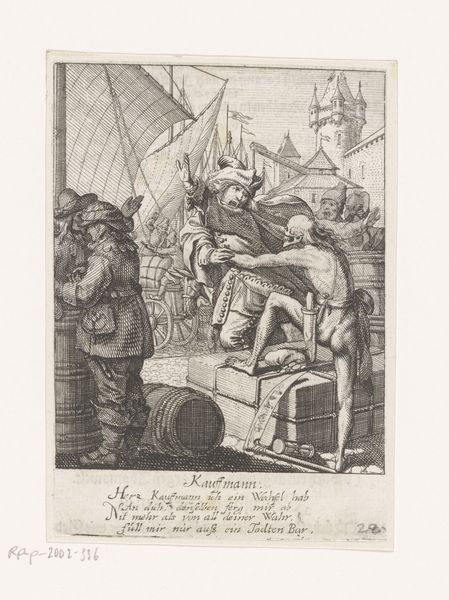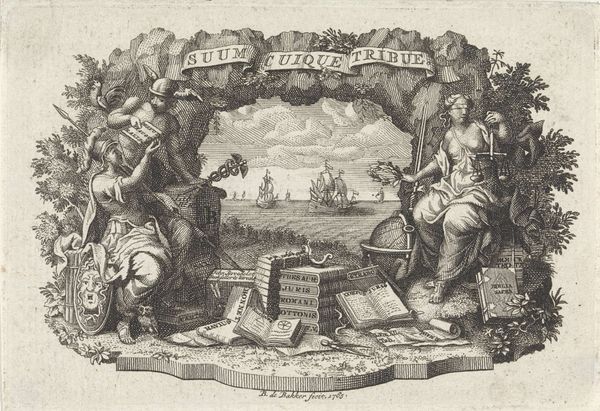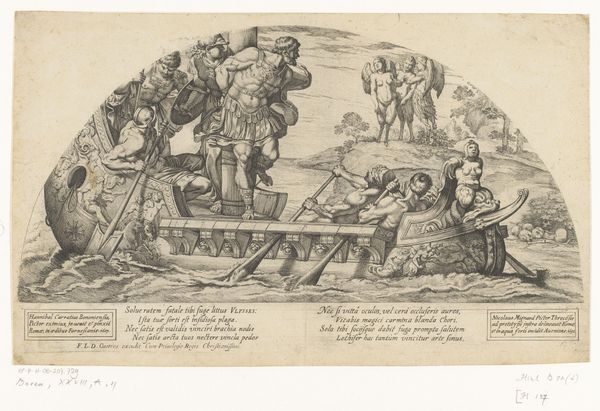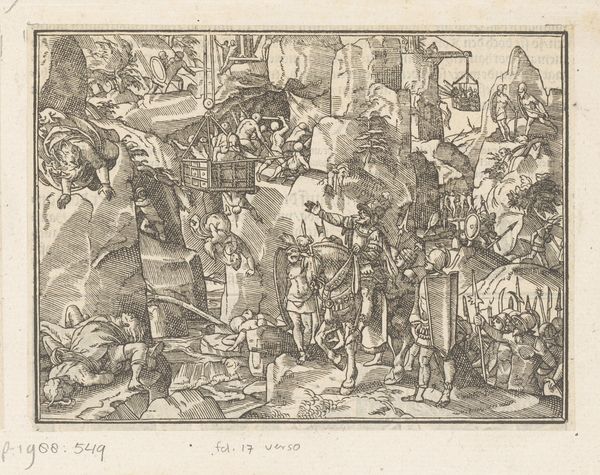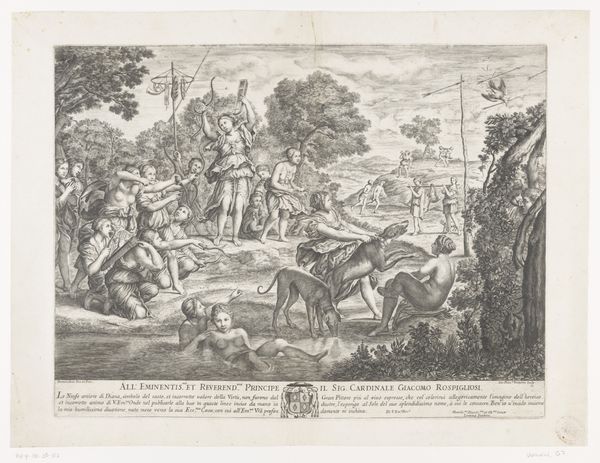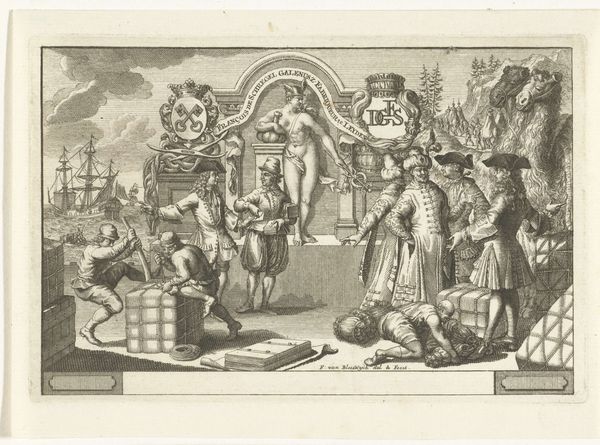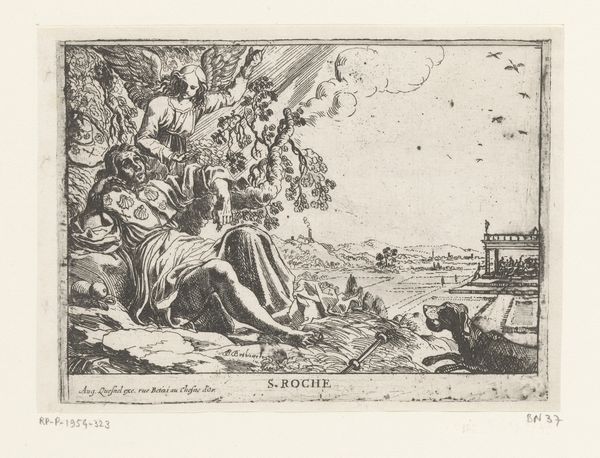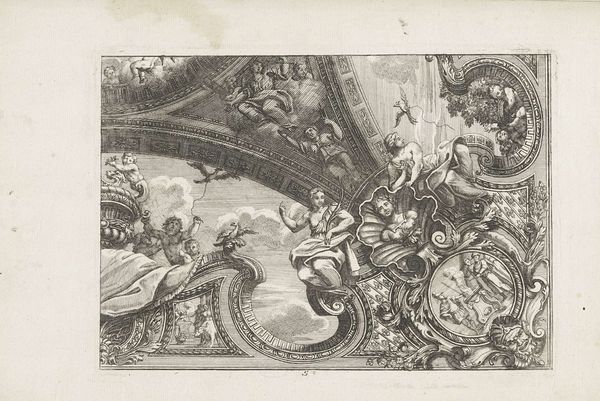
engraving
#
portrait
#
baroque
#
old engraving style
#
cityscape
#
history-painting
#
engraving
Dimensions: height 87 mm, width 144 mm
Copyright: Rijks Museum: Open Domain
Curator: Jacob Folkema created this engraving in 1748, titled "Portret van George Anson boven een zeeslag"—"Portrait of George Anson above a naval battle." It resides here at the Rijksmuseum. Editor: Immediately, I’m struck by the sheer density of symbols. It's like a Baroque fever dream—every inch crammed with detail, hinting at narrative depth. Curator: Indeed. The work showcases the rather celebrated figure of George Anson. He was, in his time, a famous British admiral. You can clearly discern the naval battle scene just below his portrait, while maritime and military objects like globes, weaponry and navigation tools encompass it. This engraving highlights the institutional power that defined his world. Editor: The symbolic load is quite impressive! Notice how the ships, billowing with smoke, appear almost miniature compared to the elaborate frame of allegorical figures, heraldic shields, and weaponry. Neptune even makes an appearance, wielding his trident! Curator: A fascinating choice, Neptune. Folkema is referencing Anson's circumnavigation of the globe, using Neptune as a nod to his command of the seas. How was the heroic celebrated, who benefited from it? Engravings like this one worked to solidify those themes in the public consciousness. Editor: Exactly! The objects aren't merely decorative; they are badges of accomplishment, evoking the legacy of naval power. The globe speaks to exploration, the instruments suggest mastery over the seas...all reinforcing a controlled, powerful narrative. I keep thinking, it almost feels as though each component of this framework operates as an attribute. Curator: Absolutely. We're observing the mechanics of crafting and embedding the hero in society. That period witnessed profound changes, but old hierarchical modes of art production still reigned supreme. Anson's portrait isn’t just of a man but the representation of British power and might in the Age of Exploration. Editor: Considering the social narrative surrounding images like this engraving allows us a more complete understanding of its reception by the culture it represents. Thank you! Curator: It highlights the enduring fascination with power, its image construction and historical context. Anson must be remembered through these lenses.
Comments
No comments
Be the first to comment and join the conversation on the ultimate creative platform.



